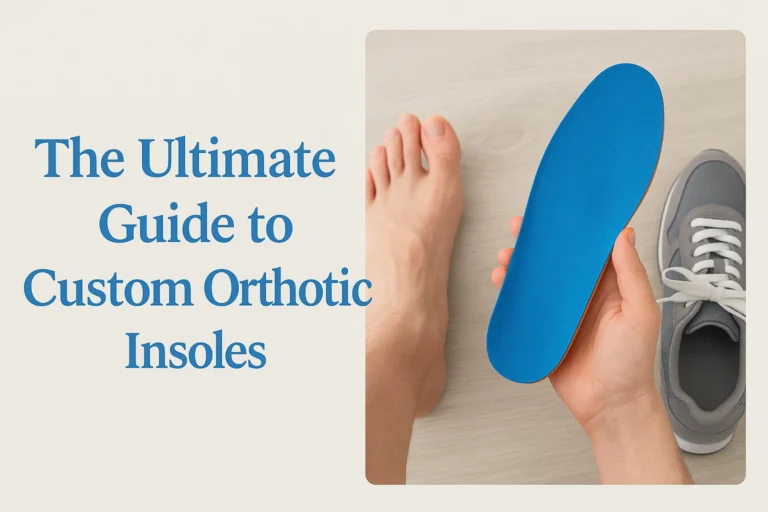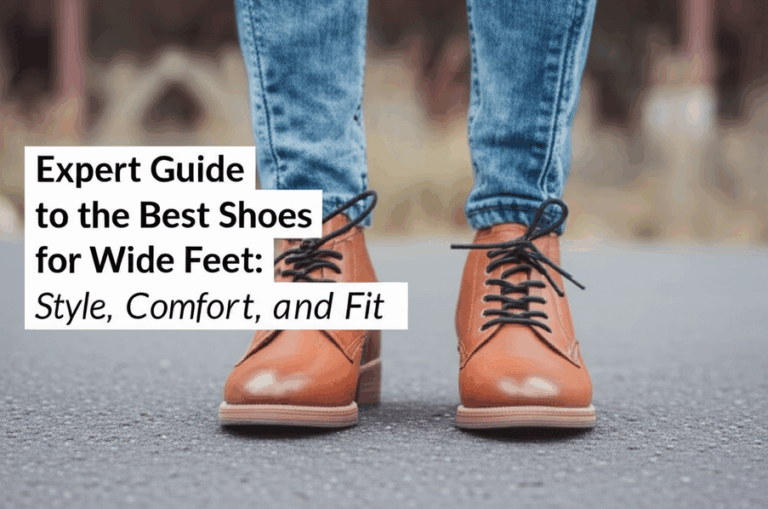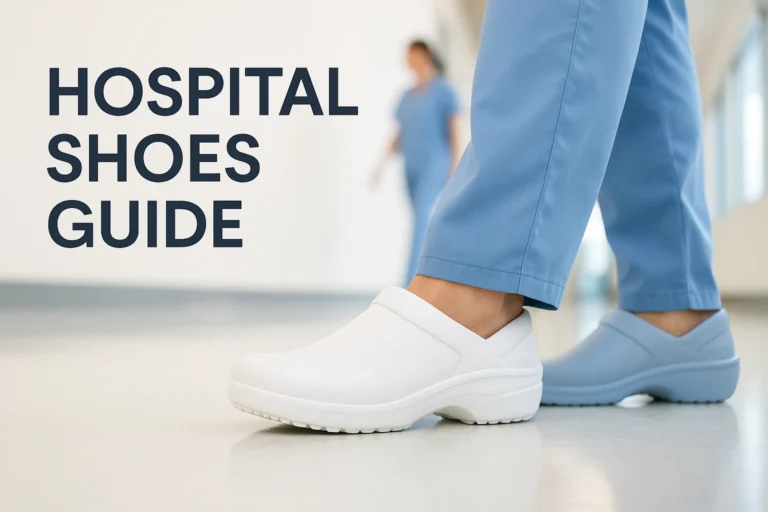What Does GS Mean In Shoes? (With Size Chart)
Buying shoes may seem simple: they’re everyday items we all wear. However, many overlook key details while shopping, especially terms like “GS.”
You’ve likely spotted this two-letter term on numerous shoes in stores. But many, especially new shoppers, ask: What does GS mean in shoes?
You might think, “Is it even important?” But consider this: brands wouldn’t use it without a reason. They wouldn’t stamp countless shoes with “GS” if it had no value. Our experienced team has created this guide to clarify the “GS” term. We also provide helpful shopping advice to enhance your buying experience.
What Does GS Mean in Shoes?
When browsing the vast array of shoe choices, we often come across various acronyms and terms. One such term that has intrigued many shoppers, especially those searching for kids’ shoes, is “GS”. So, what exactly does GS stand for in the world of footwear?
What is the Meaning of “GS” in Shoes?
GS meaning in shoes stands for “Grade School”. These shoes are designed for the foot size of grade-school children, usually aged between 3-8 years. This label makes choosing the right footwear for kids in that age range easier.
For those curious about the origin of the GS acronym, it was first brought to the market by Nike with the launch of their Air Jordans line for children. The term quickly gained traction, and many shoe companies began using GS in shoes meaning (and other naming techniques) for their lines. All brands agreed that such a classification system is beneficial, particularly when offering a wide variety of sizes.
Size Variations and Design Adaptations
It’s crucial to note that the “GS” designation doesn’t point to a single shoe size. It encompasses a range of sizes, each detailed in separate size charts. For example, a size 6 GS size meaning is vastly different from an adult’s size 6. Age can also play a role; GS meaning shoes for a 6-year-old might differ from those for a 7-year-old.
When creating GS shoe lines, some brands modify their top-selling adult designs into smaller versions. The result is mini versions of the original, proportioned to retain much of the initial design’s essence.
It’s essential to differentiate between GS sizes and adult sizes. A GS shoes meaning label doesn’t pinpoint a specific size; instead, it spans a range. For instance, a size 6 GS size meaning differs significantly from an adult’s size 6.
| Age Group | Possible GS Size |
| 6 years old | Size 4 GS |
| 7 years old | Size 5 GS |
Moreover, while creating GS shoe lines, several companies resize their best-selling adult styles to suit children. The outcome is a mini replica of the original, retaining much of its design, yet tailored for smaller feet.
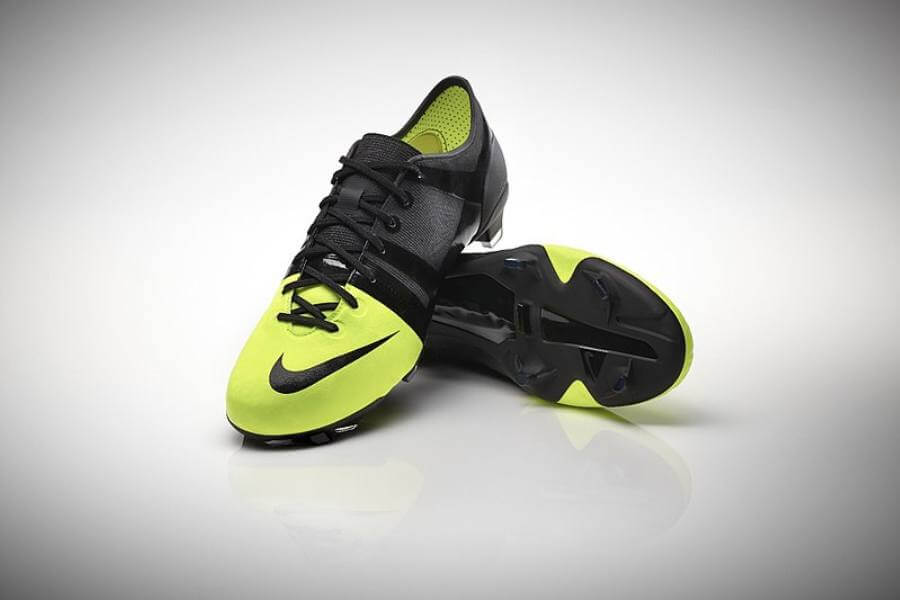
Common Standards for GS Shoes
Inner-shoe Measurements
Some people have quickly discovered that Men’s and GS’s lengths are more or less similar (Many brands redesign their adult shoe versions for kids). While that’s not wrong, there are reasons only grade-school children can fit into them!
GS sizes have much smaller and narrower insole widths compared to their adult counterparts. And certain inner-shoe compartments (ex: the instep size and arch height) are not reflected in GS sizes.
Why is that? Because, unlike adults, children’s feet keep growing at a startling rate (3 to 10-year-olds’ feet grow 1mm or less every month, and they require new shoes 1-2 times each year), meaning the shoes must leave some spare room for better comfort!
Now, we trust that you understand why no adults (even small-sized ones) should try to squeeze their feet into GS sizes. They are meant for developing ages only!
Material Quality
GS shoes meaning being remade versions of adult models does not mean both are made of similar materials. A closer look into their assembly quickly reveals how wrong that assumption is!
For one, the grade school versions often have softer, lighter, and much thinner materials to create extra convenience for their small, delicate feet. Rubber outsoles are a case in point.
The cushioning layers are much less dense than their adult models. It’s easy to realize that these palpable differences also influence the entire shoe design; heel/ankle support and shock absorption are not really crucial parts of GS sneakers. Thus, you cannot expect the same material quality in GS shoes meaning as with adult shoes. That does not mean you should skim over them entirely, though. Some recommended options include mesh, textiles, synthetic leather, et cetera.
Aesthetics/Color Options
Though inferior to adult shoes in terms of quality and durability, you can expect many more options regarding color themes and aesthetics!
Most GS meaning in sneakers have vibrant, eye-catching colors and designs of varied hues to cater to as many children’s preferences as possible. Even neutral colors (such as those from Jordan) are available – though rarer – which easily match diverse wardrobes and clothing choices!
Choosing GS Footwear for Your Kids – Measuring Tips to Remember
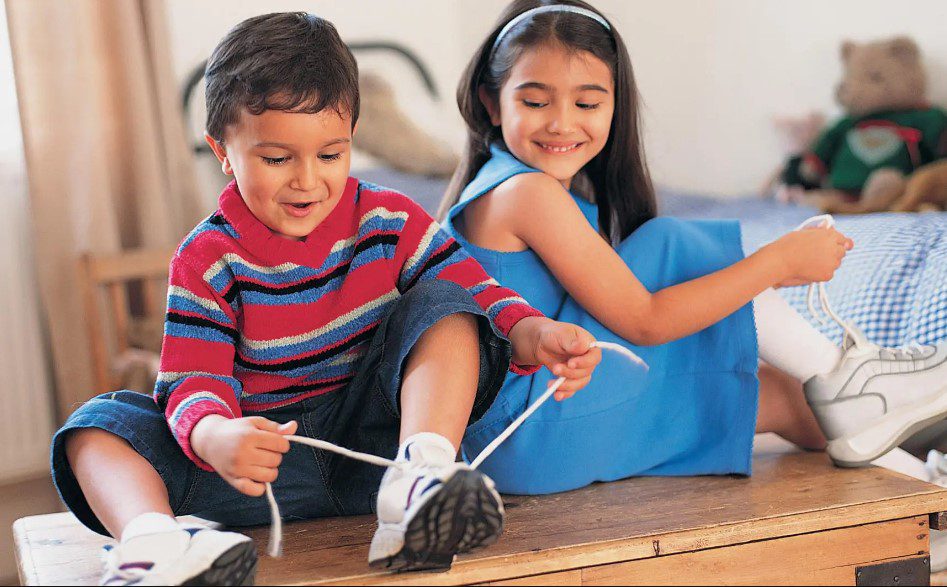
The best bet is to take your children directly to a shoe shop, and you may have them try every option and find out which pair fits best.
Still, we understand that some busy parents have no choice but to resort to online purchases. Learning tips to measure the child’s foot sizes beforehand is crucial. Only then will you not feel regret about your spent money!
Prepare a paper and ruler, and pick an area close to the wall. After that, follow these guidelines:
Step 1. Ask the child to stand flat against a wall. Confirm that the wall and his heels are well aligned!
Step 2. Put your ruler between two feet. Measure the gap from those walls to the kid’s furthest toe top.
Step 3. Jot the foot lengths down.
Step 4. Foot lengths are undoubtedly the primary indicator of which size to buy. Nevertheless, you should consider other features. (including arch height, instep size, and foot width).
Extra Tips:
- Consider how the child will use that footwear. Sneakers can fit almost every occasion. Yet, some options work better at the parks or schools than on formal occasions.
- Our feet usually swell up during afternoons or evenings after long days of running and walking.
- It’s best to measure the kids’ feet from afternoons onwards. You may also ask the child to wear their normally-used socks. Do not choose ones that are too thick or too thin; something in between will be great!
- As previously discussed, children grow incredibly faster than adults, so try to add a little bit more to the final measurement you got.
- After all, children these ages sometimes do not know how to express their feelings/discomfort – a factor you should also pay attention to. There is a high chance that your little one is wearing the wrong size shoes, so keep an eye on them and ask how they feel wearing that pair of shoes.
Size Chart for G.S Shoes
Nike might be the first brand to come up with acronyms like GS, but remember that it’s far from the first shoe company in the world! Don’t be surprised that you might stumble upon hundreds of different chart sizes on the Internet; each brand has its own rules!
Nevertheless, first-time parents should not be worried; things do not sound as chaotic as they might seem. Despite numerous chart variations and adjustments across labels and countries, there is still a common standard chart for everyone to follow.
So before experimenting with more shoe labels and brands, you can have an easy start for your family by checking those standard charts first.
The Meaning of Y and K
You might see the letters Y and K pop up quite frequently. What’s even weirder is that they do not look like any measurement unit commonly used (like centimeters or inches, for instance). So what do they mean, and should you pay attention to them?
Surprisingly, Y and K actually refer to the same thing. Y is short for “Youth” or “Youngsters,” implying that the shoe size is for kids. Meanwhile, K means “Kid,” but more commonly used in the UK than in the US. Both 7Y and 7K basically point to size 7 for children; the purpose of including Y and K in the measurement is mainly to differentiate these shoes from size 7 for grown-ups.
How to Read The Chart
After figuring out the kid’s foot size via the methods we introduce above, refer to the chart to check their corresponding shoe length. Suppose his foot length is 8 inches (or 22.5 centimeters); you can see that it correlates directly with 3.5Y on the US Size column. Do the same with other size options, and there you go!
The Full Chart
Heel to Toe Measurement
| US Size | UK Size | Centimeters | Inches |
|---|---|---|---|
| 3.5 Y | 3 K | 22.5 | 8 |
| 4 Y | 3.5 K | 23 | 8 |
| 4.5 Y | 4 K | 23.5 | 9 |
| 5 Y | 4.5 K | 23.5 | 9 |
| 5.5 Y | 5 K | 24 | 9 |
| 6 Y | 5.5 K | 24 | 9 |
| 6.5 Y | 6 K | 24.5 | 9 |
| 7 Y | 6.5 K | 24.5 | 9 |
GS Sizes in Brands
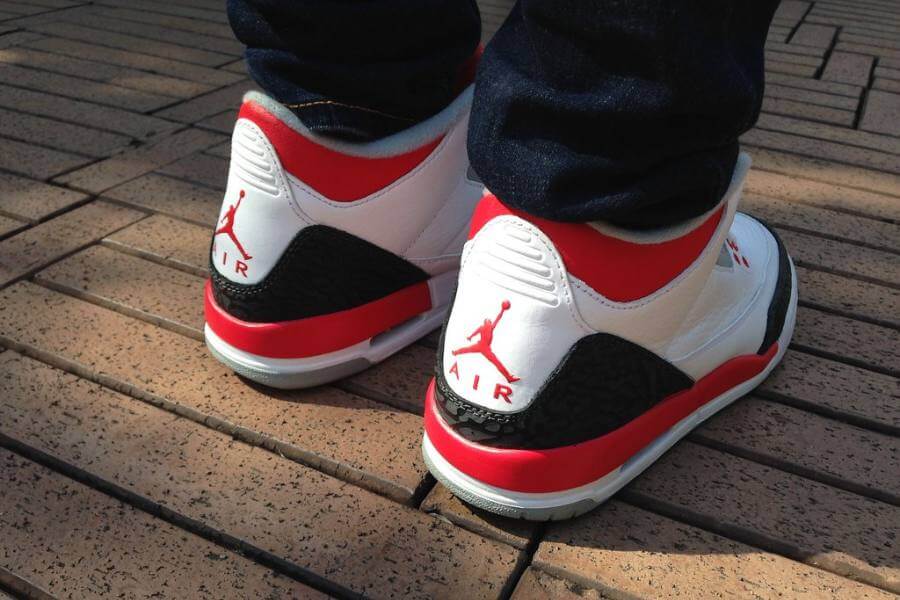
Nike Shoes
The smallest Nike shoe sizes in the U.S. are 3.5 Y, while the largest is 7Y. And the U.K does not differ much from these calculations, ranging from 3 to 6.5. Pretty inclusive, you know? Parents from both countries have tons of options to switch between!
Aside from that impressive size range, what else makes this famous shoe brand stand out from the rest? GS Nikes are produced with a static and lightweight fit that enables your child’s foot skin more room for blood circulation – terrific for summers or hot weather periods.
Composed of ventilated and petite mesh – a promising tendency in the shoe market, it’s clear that GS Nikes’ priority is skin breathability and comfort. Furthermore, the kid can gain a much better sense of speed during his moving or walking, thanks to the Zoom Air technology that offers a soft and elastic feel. And that’s not the end of the story;
its cordless design – firmly wrapped in flywire yarns – offers both firm-perfect fits and anti-vibration protection. They ensure your child has the best, safest experience anywhere he goes.
The shoes even arrive with shock-resistance pads, providing a petit and supple feeling when running or playing around. The sole is made of durable and pliable textiles to deliver more traction, bending perfectly with your kid’s toes in all vexation situations.
With all these amazing features, Nike should be the top go-to option for parents buying shoes for grade-school youngsters. Not to mention, the aesthetic benefits of these items are also top-notch!
Jordan Shoes
Like its rival, Nike, Jordan also has separate shoe ranges for adults (Men/Women and kids (GS). GS Jordan’s size ranges also share striking resemblances with that of Nike, beginning with 3Y and ending with 7Y. And that’s about the U.S.; regarding the U.K. measurements, its numbers run from 3-6.
Both Jordan and Nike prioritize the child’s comfort above all else, yet the methods they choose to do so seem to differ. In the case of Jordan, the brand uses rubber outsoles (instead of mesh and textiles), including two compartments to cut off the shoe weight and foster a smoother transition.
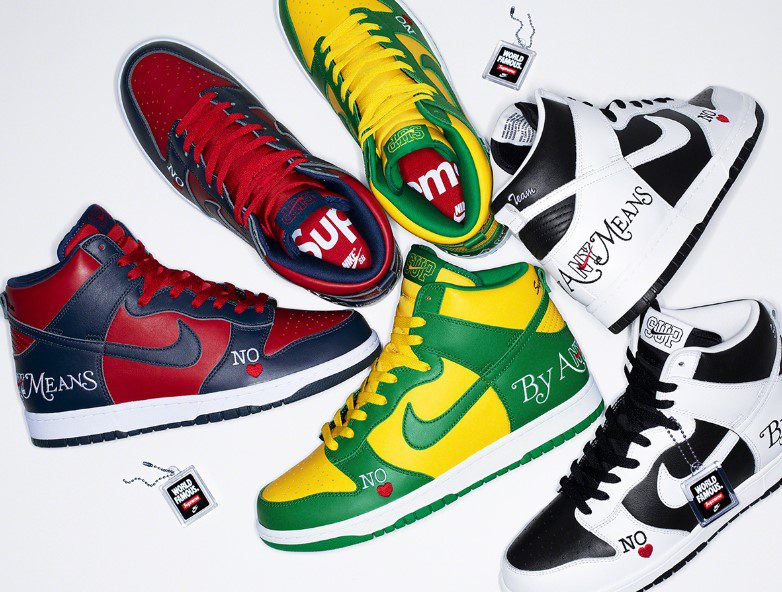
Customers are also impressed that the outsole is put right under zoom air units, allowing changes to herringbone tractions and delivering a much more divine user experience! The Jordan laces go straight through interlocking eyelets and loops, keeping children from struggling for hours with how they work. Even better, once the shoes are properly tied, the material will receive sufficient pressure, keeping his foot firmly on the sneaker’s footbed!
More amazing is the breathable tongue, rubber outer shanks, ankle pads, and color-changing logos, which make Jordan all the more outstanding contenders. A wonderful combination of style and practicality, they are great choices for young children to wear to school!
Verdict
It’s hard to say whether Jordan outperforms Nike; both exceed in their respective areas. Assess your kids’ preferences, demands, habits, and aesthetic tastes to decide which brand you should go to at the end of the day.
Other Popular Shoe Acronyms and Terminologies To Note
GS is one of several acronyms you should consider when searching for suitable footwear. Hence, this section will gladly introduce and discuss other key terms, lending you better insights into how brands categorize and name their shoe ranges!
Some acronyms refer to shoe sizes (like G.S.); however, certain phases have nothing to do with lengths or widths.
All of this sounds like an ominous foreshadowing, but trust us when we say their meanings are easy to remember! With all these informative tidbits in mind, choosing the most appropriate sneaker style, size, and design is no longer a challenge.
PS
PS in sneakers, shoes, and footwear means “Preschool“, identifying a shoe size category for kids from three to five years old. Most PS shoes run from 6.5 to about 8.5 inches (heel to toe), but remember that slight fluctuations might be at play for certain brands.
PS is put before GS (Grade School). Does that mean these Preschool/PS shoes are only for tiny babies under five? Not really. They are suited to numerous age groups in practice – since not all children share the same shapes and sizes.
For instance, if your child grows faster than average, consider buying him GS sneakers – even though he hasn’t reached grade school age yet.
TD
TD can have many meanings, but in the shoe realm, it means “Toddlers“. Shoes tagged “TD” are manufactured and designed particularly for toddlers ages 1-3, being super lightweight to keep the babies from being weighed down. That design is innovative, as the children have only started learning to walk!
Extra note: Some shoes also have the label “TDV”, standing for Toddler with Velcro. More specifically, the velcro helps strap the child’s feet firmly to the shoe, offering the best grip and fit. Thanks to such a feature, chances that the shoes slip off are unlikely, which keeps the toddlers well protected during this critical growth stage.
R/N/M/W
A shoe with “R” labels refers to regular width. R shoes are among the most common widths, strongly recommended for people with regular-sized, ordinary feet.
The “N” letter indicates that the shoes have narrow fits. These footwear items are wonderful for customers with smaller feet than average – who struggle to adapt to regular, conventionally-sized sneakers. Wearing shoes too wide can lead to many walking discomforts at the end of the day!
For shoes with an “M” letter, their fits are medium-width. People whose shoes are too big for Ns but too small for wider shoes will find M sneakers a lifesaver.
How about W? You can guess it easily – the first letter of “wide”. These shoes are undoubtedly the least popular out of the bunch, only going well with feet much larger than usual.
GG & BG
GG means the shoes are mainly aimed at Grade-school girls. From their aesthetic designs to interior features, these sneakers scream GIRLISH from head to toe.
Like GG, BG refers to shoes directed at boys in grade-school ages. Their designs, colors, and the like will appeal mainly to this demographic. They also focus on the average feet size for grade-school boys, including widths.
SP GS
The phrase “SP GS” is a combination of SP (meaning Special Projects) and GS (or Grade School). These shoes are special edition versions tailored for grade schoolers from 6 to 12 years old, with more innovative features and durable material.
BC & I
This single letter “I” points to “Infants“. Shoes with this label are produced for kids from 2 months to about 12 months of age. “BC” is the acronym for “Baby Crib“. As the name suggests, such footwear types are aimed at newborns (0-2 months).
In these critical periods, the children’s feet are undeveloped and soft, so the shoes comprise only the lightest material to keep the toes protected, clean, and warm.
V
Next in line is V, short for “Version” – easy to guess, right? Let’s look at one simple example: V1 points to the silhouette’s first version, V2 the second ver, et cetera. These abbreviations frequently appear in pricey or stylish sneakers, particularly the Yeezy Adidas lines.
There is often a huge discrepancy between two particular shoe versions regarding designs and features. Careful assessments are important to decide which version suits you/your child better!
Bred
Wrapping up our list is Bred, which means “Black + Red“. Some most widely-purchased drops in history are Bred themes, such as Jordan OG 1 High, Yeezy 350 V2 Boost, and more. And kids’ versions are no exception!
Like “GS,” Bred also stemmed from Nike shoe lines and later became adopted by many brands and customers.
Conclusion
hat does GS stand for in shoes, and is there any criterion I should consider when browsing through footwear options? Our article has dived deep into the issue. Keep these guides in mind and write to us if troubles persist during your shopping spree! By the way, if we don’t make ourselves clear in the measuring guide, let’s jump to this video tutorial:
Related posts:


